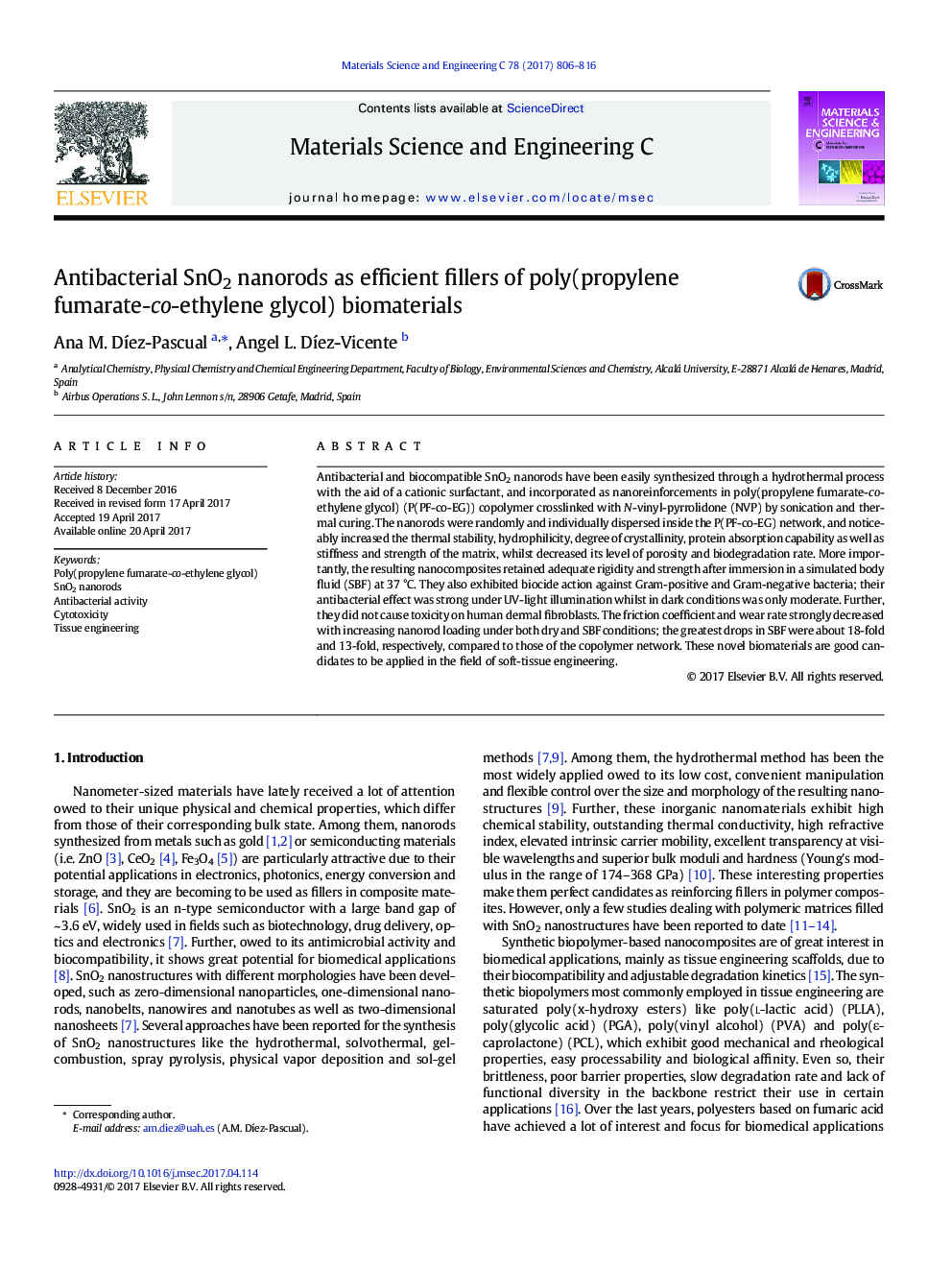| کد مقاله | کد نشریه | سال انتشار | مقاله انگلیسی | نسخه تمام متن |
|---|---|---|---|---|
| 5434476 | 1509143 | 2017 | 11 صفحه PDF | دانلود رایگان |

- P(PF-co-EG)/SnO2 nanocomposites crosslinked with NVP were prepared by thermal curing.
- They display good rigidity and strength in a simulated body fluid at 37 °C.
- They exhibit biocide action against Gram-positive and Gram-negative bacteria.
- Their friction coefficient and wear rate drop strongly with increasing SnO2 loading.
- These biomaterials are good candidates for soft-tissue engineering applications.
Antibacterial and biocompatible SnO2 nanorods have been easily synthesized through a hydrothermal process with the aid of a cationic surfactant, and incorporated as nanoreinforcements in poly(propylene fumarate-co-ethylene glycol) (P(PF-co-EG)) copolymer crosslinked with N-vinyl-pyrrolidone (NVP) by sonication and thermal curing. The nanorods were randomly and individually dispersed inside the P(PF-co-EG) network, and noticeably increased the thermal stability, hydrophilicity, degree of crystallinity, protein absorption capability as well as stiffness and strength of the matrix, whilst decreased its level of porosity and biodegradation rate. More importantly, the resulting nanocomposites retained adequate rigidity and strength after immersion in a simulated body fluid (SBF) at 37 °C. They also exhibited biocide action against Gram-positive and Gram-negative bacteria; their antibacterial effect was strong under UV-light illumination whilst in dark conditions was only moderate. Further, they did not cause toxicity on human dermal fibroblasts. The friction coefficient and wear rate strongly decreased with increasing nanorod loading under both dry and SBF conditions; the greatest drops in SBF were about 18-fold and 13-fold, respectively, compared to those of the copolymer network. These novel biomaterials are good candidates to be applied in the field of soft-tissue engineering.
242
Journal: Materials Science and Engineering: C - Volume 78, 1 September 2017, Pages 806-816